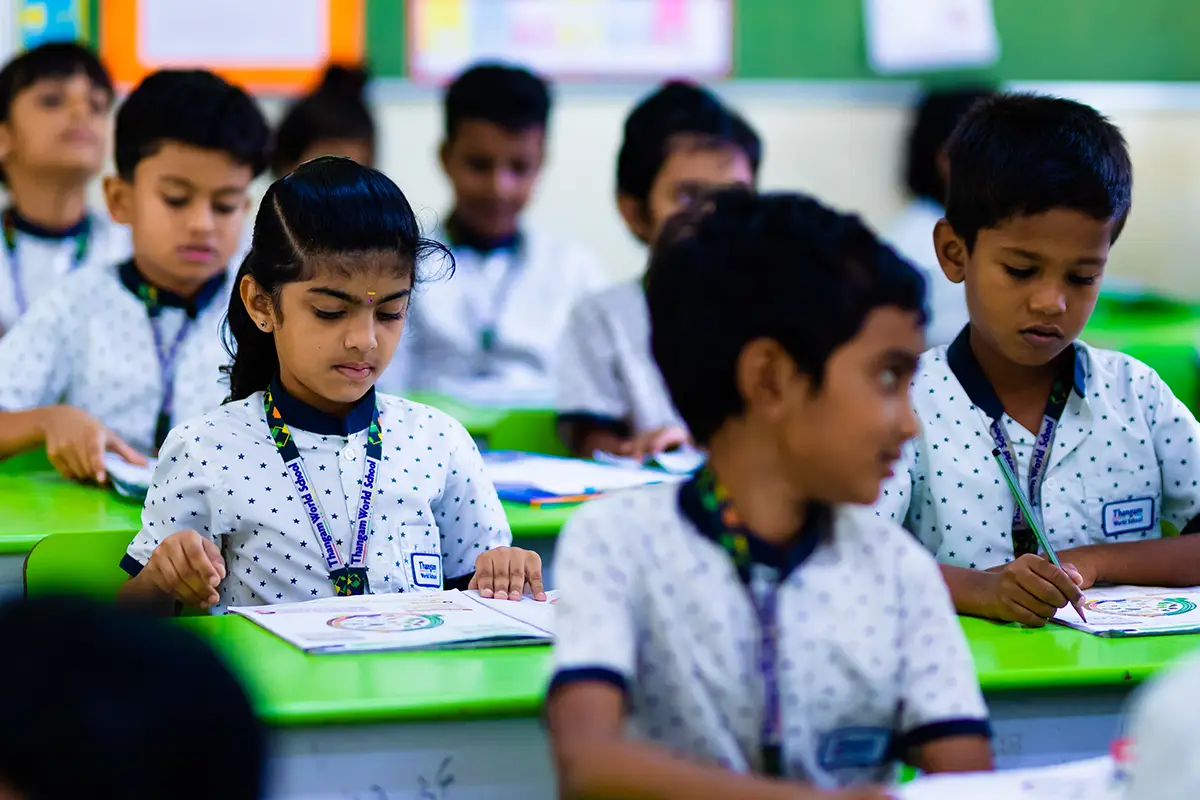
Teaching methods for children of the primary sections, aged 5 to 10 focus on fostering cognitive, social and emotional development through structured yet engaging approaches as the children are transitioning from play-based learning to more formal education, so teaching methods is focused on balancing creativity with academic rigor with the curriculum divided into 21 skill-based levels and by using the Concrete-Pictorial-Abstract approach. Active learning, which involves hands-on activities, group work and problem-solving tasks is essential for engaging this age group.

Teachers often incorporate games, interactive lessons and experiments to make learning fun and relatable. Taking differentiated instruction as the key, teachers offer varied levels of difficulty within assignments or group students by ability to ensure that every child is appropriately challenged. The students are allotted two handwriting hours per week specially, as it would work on the presentation of their papers in the long run. Technology is also a valuable tool, with educational apps and interactive boards making lessons more dynamic. Storytelling and role-play are used for teaching language and social skills, while outdoor activities and physical education promote teamwork and physical health.
Primary school teaching methods aim to create a supportive and challenging environment that prepares students for middle school and beyond while nurturing their intellectual and personal development.